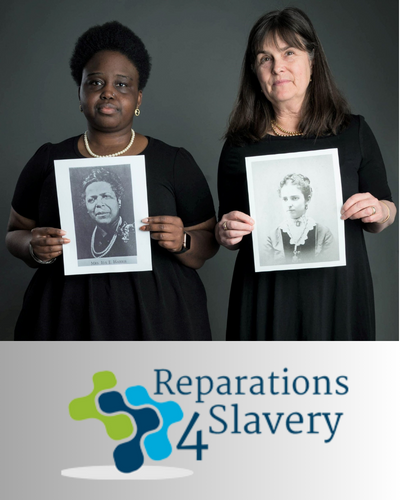
Let’s Talk Reparations: An Interview with Reparations Educator Briayna Cuffie (Part 2)
“By 1900, there was something like a million Black people who had actually been slaves who were still around. If the government had given reparations to those small number of people, perhaps the question would not have come back to bite them later on that nothing had been done.”
-Historian Dr. Mary Frances Berry from The Cost of Inheritance
In his testimony to Congress on reparations, journalist Ta-Nehisi Coates said that the average Black family in the United States has only 1/10 the wealth of the average white family.
This is not by happenstance: generations of Black families are burdened by the generational trauma of enslavement and Jim Crow, as well as the betrayal of the U.S. government by failing to make them whole with reparations.
As Black History Month draws to a close, it’s important to carry its spirit with us throughout the year. Black History Month is a great time to celebrate Black joy and success, and to take special time to honor Black history – but that doesn’t mean it’s the only time of year you should do so. Anti-racism is a 24/7, 365 day practice, and reparations are a crucial component of living in an anti-racist way.
Back again to talk with us about reparations is Annapolis historian and organizer Briayna Cuffie!
Briayna and her organizational partner Lotte Lieb Dula founded Reparations 4 Slavery to offer a portal on reparations. It targets white people to educate themselves in reparations and find ways to give them; and targets Black folks to find ways to receive reparations and find resources against microaggressions (or just plain aggressions).
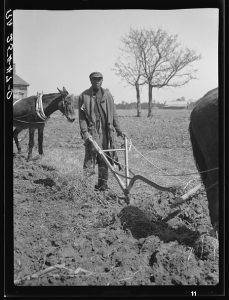
Briayna and Lotte specialize in what they coined reparative genealogy: “The act of researching our heritage, acknowledging our connections to slavery, and daylighting the history of those our ancestors enslaved.” It has taken them on a journey Briayna never imagined. They make a tangible difference in peoples’ lives every day.
Just on a personal note: I first met Briayna when I was 14 and attending The Key School for my freshman year. She was a grade older than me, and I saw her all the time on campus. She was always nice to me.
Over 10 years later, we met again at an activism/organizing event and I’m proud to call her a colleague. Funny how life is, isn’t it?
Once again to the white people who are trying desperately to click away, as a white person I say: reparations are just as scary as every other thing you’ll have to confront about having white privilege in a society of white supremacy. It will be uncomfortable and that will be hard, but: (1) your discomfort will never be as bad as that of Black people facing anti-Blackness every day in this same society; and (2) you’ll feel better in the long run because it’s the right thing to do.
Watch Briayna and her colleague Lotte in the new documentary The Cost of Inheritance on YouTube!
*This interview has been edited for brevity and clarity.*
Emma:
Tell us about your organization Reparations 4 Slavery. How did you guys start and what do you do in the community?
Briayna:
Reparations 4 Slavery was the brainchild of my counterpart, but [she] knew that as a white woman, she probably shouldn’t be doing it solo <laugh>. She at least had that awareness and was like, “I wanna make sure I do it and do it right. I want people to come to the realization that I have.” It wasn’t until 2017/2018 that she really came to understand reparations and history through all of the stuff her mom left her when she passed away.
When her mom died, she’s going through paperwork, she’s going through all of her boxes… and she’s finding yearbooks from her grandmother being in the KKK Club in college… and her great-great grandfather’s ledger listing out all the people he enslaved and his cotton plantations.
And she’s like, “Now these are the parts y’all absolutely left out in talking about these people and talking about yourselves. Hold on.” It came out of that for her, and she’s like, “I need people to get to the realization before I did. I’m too old to have just been coming to this, and I’m playing catch up to learn everything. What else have I been missing? What else have I been misunderstanding?”
So when she brought it up at that conference in 2018, she already had the concept of it and was teasing out how it might look and what it could turn into.
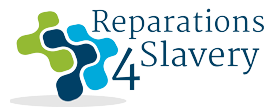
Reparations 4 Slavery is basically a repository. Our brains operate very similarly, so [when] we find information, we wanna concentrate it in one place.
“Oh, you have a question about that? There’s an article for that. And there’s two podcasts. Let me send you these links.”
Don’t tell me the information is not out there, because it is.
“Here’s this book… oh, you wanna talk about it with a 7-year-old? Here’s an age-appropriate book for you to talk about it with a 7-year-old. It’s there.”
[We] have it there to refute when white people are like, “Well, that’s not how that happened,” or “That can’t be true, are you sure?” Because there’s a website for that with hyperlinks and uploads to plenty of resources for you to start.
That’s really the big portion of it – a portal for white people to come to reparations on their own.
Some of the stuff we conceptualize together, some of it she’ll bounce off of me where she’s like, “This is what I’m thinking. I feel like it’d be helpful in this way,” and we tease it out together. Some of it is just her and I look at it and go, “That sounds dumb,” or “I don’t think I like that,” or “Let’s tweak this,” in as nice(ish) of a way as I can.
Then for some stuff, [it’s] adding the African-American angle. So, especially when you’re talking about genealogy, there’s plenty of paperwork to look at when you’re white. When you’re Black, you gotta scour a little bit more, read into the lines a little bit more; but you have to know how to do that. It’s very much a technical skill. You have to learn and work – going through stuff at the archives (and knowing when there aren’t archives); knowing that there are genealogical societies… Just adding a different lens so that it’s also helpful to Black folks.
Also, you’re surely gonna have some conversations or run ups against white people that say that piece of information doesn’t exist or a reputable source for it doesn’t exist. Black folks can be like, “Oh, are you sure? Hold on, I read it already… and listened to a book… and watched the documentary. Here are your options, so that you don’t ever say that again. I don’t feel the need to argue with you, argue with these facts and these links. Call me when you’re done”; and can just kind of mic drop and leave the conversation.
Some of the Black folks that we talk to in different groups don’t think about that as an option, but I use it as weaponry. “You’re gonna tell me something doesn’t exist?? I’ve curated the library of information that’s there. Oh no, I know it’s out there. I know it is.”
And if it’s not, people like me are writing the book on it. It’s something in progress.
But yeah, it’s very much a repository. We graduated over the years into offering workshops and one-on-ones and short series of conversations and things like that with folks. Now that’s expanding to include the documentary, but it’s really a self-sufficient site.

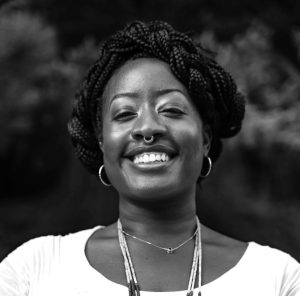

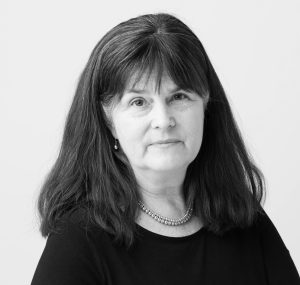 The Reparations 4 Slavery team: educator Tamara Rhone; Asia Dorsey, host of the Healing Black Futures Podcast; equity advisor & co-founder Briayna Cuffie; and founder Lotte Lieb Dula.
The Reparations 4 Slavery team: educator Tamara Rhone; Asia Dorsey, host of the Healing Black Futures Podcast; equity advisor & co-founder Briayna Cuffie; and founder Lotte Lieb Dula.
Emma:
That’s amazing… that brings me to the next question: what metrics does Reparations 4 Slavery use to measure its success in the community? Or its impact, I guess is a better word?
Briayna:
This is gonna sound real weird, but we like, don’t really <laugh>. Word of mouth and how many people email us… and of course we get the technological ones, like hits to the website, where people click, and stuff like that.
I would say [we] really measure our success, so to speak, by the random people that reach out to us, come across our site, or say, “Hey, my friend did your workshop and then they sent me this link. I thought I was gonna hate this, but actually I see where y’all coming from. Maybe I don’t hate it as much as I did. It just sounded scary.”
My favorite is when people email us in a rage where they’re like, “How dare you try to get people on board with reparations? Y’all are going about this all wrong!”; and then three weeks later, be like, “So, I spent some more time on your website. Maybe y’all have a point… Maybe y’all have a couple of points. Maybe it’s not entirely wrong. I see what y’all are doing here… I’ll allow it.” <laugh> They do a 180, which we love.
In the early stages of it, we were running it by some of [Lotte’s] conservative peers and even former clients: “If I bring this type of argument to you, how can you refute it? Give us the bullet points so that we can fine-tune it some more, until we get you to a point where you just go, ‘<annoyed white man huff> Fine!’” <laugh> That was our goal. We have this wealthy white Republican man who reads about reparations and goes, “…fine. I guess I see your point.” That’s when we know!
Lotte used to be a wealth manager, so she’s like, “Look, my clients are precisely the exact type of people that hate to hear about the word ‘reparations’. If they can get on board, at least with the logic of it, we’ll be doing something.” And I was like, “Yes, agreed.”
But yeah, really word of mouth inquiries as people reach out to us, which we do have to tamper [down] because we are only two people and like, I have a job <laugh>. We don’t do this full-time – well, she does ’cause she’s retired, but I don’t. We try to do as much as we can as duos.
When we did our two year cohort, we had a solid 40 people that showed up week after week. The first year it was every week, the second year it was twice a month; and they showed up every time, from California to Boston. People were on it and staying engaged the entire two hours.
That’s really what it is. We know we’ve really done something when someone that has done something with us or attended something we’ve done, when we hear from someone else who knows them well, I know of them because of so and so, and “You know, they’ve really been talking a lot about it, I really like what they have to say, and they say they learned that from you.”
And we’re like, “We love that for us, and for you, and for everyone you’re about to come into after, and you’re gonna continue to spread that.” That’s really how we measure it…
You can’t understand the highest levels unless you understand the lowest levels. You can’t be advocating for reparations at the federal level when you don’t understand at the individual level what kind of impact that would have on somebody. For me, that’s just how it made sense. So we focus on the individuals and groups, and that builds the momentum for the case at the higher levels…
I’m pretty sure me being able to buy a house, me being able to recirculate my money into other Black people’s hands for services and goods so that they are more financially stable – I’m pretty sure that does great for the US economy.
And that’s just the ripple effect from one person who was already, kind of, middle class-ish. Can you imagine what that would do for the quality of life for someone at a lower economic level than I am?
…when you invest in non-white people, we are the better return on investment – in particular non-white women. We are the better return on investment because our inclination, immediately, is to go out of ourselves and make sure our families and communities are also set.
Going from six figures in student loan debt to an actual manageable amount that’s close to the national average is a massive difference in how I’m able to live my life and impact other people’s lives. That shows financially, but also socially.
I’m sure we could be collecting data in some better ways, but I think so long as people are using the site as a resource, using what they’ve learned from us doing presentations as a resource, that’s all we really care about.
Emma:
That’s awesome. And that is exactly the kind of response I wanna solicit from conservative white men too is, “…<annoyed white man huff> Fine.”
Briayna:
It brings me great joy; and then be like, “You’re bugged by the fact that you can’t say nothing about this, can you? I love it. Sit in the discomfort.
“While you’re at it, be so uncomfortable you write me a check <laugh>. Channel that anger into the pen on a check. Channel that into rewriting your will.”
Emma:
<Laugh> especially if you’re the Koch brothers or something…
Briayna:
One of the things that came out of [all of this] is that we’re cited in a parenting book. She reached out to us and we were like, “Are you sure you wanna talk to two childless, child-free people… for your parenting book? Are you sure?”
She was like, “That’s precisely why I wanna talk to you, though; talking about legacy and entitlement and generational wealth. That’s the angle.” And we were like, “Oh… Now that we can talk about! Yes! <laugh> All right.”
You don’t wanna raise spoiled little brats? Okay, we can talk about that <laugh>. We can tie that in with reparations, absolutely.
So the variety, those kinds of requests and random emails and people, all because she found the site in trying to do family planning and long planning for her own kids.
She’s like, “In understanding my whiteness, one of the hallmarks is the fact that we concentrate our wealth into our children instead of distributing it to Community. We put them in private schools instead of having them be in public schools where they would get more funding and have better quality schools. Let me think about this some more, and what I can do, and what kind of characteristics I can instill in them while they’re little in different ways. And as they grow, to help them understand why I have done what I’ve done.” So even random stuff like that, new angles of how you’re using this… We like it.
Emma:
That’s amazing. I’m so happy for you guys that it’s getting that effect. So… what would you say to someone who argues that poor white communities should receive the same reparations as those intended for Black communities?
Briayna:
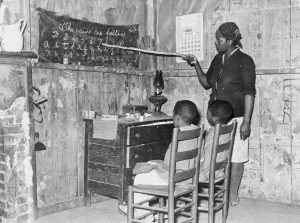
Ooh, see, I gotta say… They’re not the priority.
Time and time again shows that when you invest in non-white people, we are the better return on investment – in particular non-white women.
We are the better return on investment because our inclination, immediately, is to go out of ourselves and make sure our families and communities are also set. We operate naturally in a way that makes sure the community across the board is well taken care of…
But yeah, I would say they’re not the priority. That is an intra-community, like a white community problem. Take that up with the wealthy white people in your community about why they wielded capitalism in that way, such to deny those who look like them the same opportunities. It’s a white problem.
Emma:
I agree with you… Why do white people who are not descended from those who enslaved others or Klan members still need to pay reparations?
Briayna:
They’re still the beneficiaries… It’s not like they didn’t know what was going on around them, but they either willingly turned a blind eye or were an active part of ensuring that it continued. Either way, they knew better than to mess up the status quo.
My response [to that question] is always, “Okay, let’s talk about complicity then.” ‘Cause a lot of people go, “Oh, well my great grandparents moved here and came around World War I or between World War I and World War II…”
And I’m like, “Okay… but when did they learn, you know, to not be affiliated with Black people?” That’s the hallmark of it.
Complicity by way of assimilation into becoming American is probably the best way to put it.
In some way, shape, or form, if you’re white-skinned, you kind of can’t avoid it because you want to live that quote unquote American dream. Either your ancestors were a direct beneficiary of the white supremacy, or they were a part of making sure that it was created and sustained, and sometimes both. There’s no escaping contributing to rectifying the harm in whatever ways possible for the present day.
Emma:
I only had one more question and then I wanted to give you the opportunity to plug the documentary. What is your advice on how to get started on reparations, either to Black folks to receive them or to white folks to give them?
Briayna:

I really think a lot of it has to do with understanding yourself by way of your ancestors and understanding history…
Just being inquisitive about who you are and who has made up and where has made up who you are is the best start. A lot of people don’t do that until their forties, fifties, sixties; that’s when people tend to get really into genealogy. For our generation, it’s important that it happen sooner rather than later because of what I was saying earlier around the access to Elders and technology and being able to get information firsthand.
A lot of it has to do with being inquisitive about yourself in a different way. Not just, “What do I like, what do I not like? Who are the type of people I’m attracted to?” But a deeper sense of your sense of self and who you are.
Emma:
Awesome. Thank you so much for taking the time to sit and speak with me about this really crucial topic. Tell us, what’s the name of the documentary and where can we find it?
Briayna:
The documentary is called The Cost of Inheritance and it is through PBS. It premiers tonight actually, on PBS World at 10:00 PM. It’ll be running a couple times this month and then next month during Black History Month, if I recall correctly. Should be on YouTube starting tonight. Then there will be a variety of screenings and Q&As over the next few months across the country.
The documentary actually follows her and I, another pair, a farmer, and then some folks from the Georgetown University 272.
Emma:
Wow, that sounds incredible… Thank you again so much for sitting down with us and talking about this, and I’m excited to speak with you again.
We plan to speak with Briayna again sometime this year to talk more about her community of Eastport, its history, and its eventual gentrification.

 Briayna and Lotte featured in The Cost of Inheritance giving a presentation on direct repair. You can watch the documentary on
Briayna and Lotte featured in The Cost of Inheritance giving a presentation on direct repair. You can watch the documentary on